Moniek Bloks's Blog, page 42
July 28, 2024
Regina of Saxe-Meiningen – The would-be Empress of Austria
Regina of Saxe-Meiningen would have been Empress of Austria if the Austro-Hungarian Empire hadn’t been dissolved in 1918. She was born 6 January 1925 in Würzburg, the daughter of Georg, Prince of Saxe-Meiningen and Countess Klara Marie von Korff genannt Schmissing-Kerssenbrock. Her father was the titular Duke of Saxe-Meiningen as the duchy’s last Duke had abdicated in 1918, and the lands merged into the new state of Thuringia in 1920.
Regina was the youngest of four siblings. Her elder brother Anton Ulrich was killed in action in the Second World War, and her second brother Frederick Alfred renounced his succession rights to become a monk. Her only sister, Marie Elisabeth, had died in infancy. Her father, who had joined the Nazi party in 1933, would die in a prisoner-of-war camp in Russia in 1946.
Regina went on to study social work in Bamberg and began working at a refugee home in Munich. This is probably where she met her future husband in 1950. Crown Prince Otto of Austria (also known as Archduke Otto von Habsburg) came to visit some Hungarians who were being cared for in the refugee home.1 Otto later said, “It was in the summer of 1950 at the camp refugee centre in Munich that I met Regina for the first time.”2
Embed from Getty ImagesRegina and Otto were married on 10 May 1951 at the Eglise des Cordeliers in Nancy as Otto was still barred from entering Austria. Communists targeted the wedding procession by throwing eggs, which missed the couple. Regina wore a white satin gown and diamond tiara, the same which had been given to her mother-in-law by Emperor Franz Joseph I of Austria, and was escorted by her mother. Regina’s long face veil had been worn before by one of Empress Maria Theresa’s daughters at her wedding. The myrtle blossoms in her bridal bouquet came from the gardens of Schönbrunn.3 Otto was accompanied by his mother, Empress Zita. Zita wore a black dress and a long veil to her son’s wedding, with pearls, the Star Cross Order and the imperial sash. She had celebrated her 60th birthday the day before.
Pope Pius XII sent his blessing, which said, “To our dear son, Prince Otto of Habsburg-Lorraine. The awaited day will soon shine on the ceremony in which your Imperial and Royal Highness will marry Her Serene Highness the Princess Regina of Saxony-Meiningen. We do not wish this happy event to pass without giving your souls the joy of our good wishes and fatherly blessings.”4
The newlyweds went on a honeymoon, which began in Lequeitio. Upon their return home, they settled in Clairefontaine, France. In 1954, they moved to Pöcking near Starnberg. While Zita’s biographer Gordon Brook-Shephard noted that “Regina caused some concern by bearing five daughters in rapid succession…”, Regina and Otto went on to have seven children together: Andrea (born 1953), Monika and Michaela (born 1954), Gabriela (born 1956), Walburga (born 1958), Karl (born 1961) and Georg (born 1964).5 Regina was said to have been a devoted wife, and Otto once said that without her support, he would not have been able to have a successful political career.6 In 1955, they had an audience with Pope Pius, who had sent them a blessing for the wedding. In 1961, Otto renounced all claims to the Austrian throne to be able to enter Austria again. He was finally able to visit Austria again in 1966.
Embed from Getty ImagesFor many years before her death, Regina suffered from heart problems. She suffered a stroke in 2005 but was able to recover. She died on 3 February 2010 at the age of 85. She was initially interred at Veste Heldburg before being moved to the Imperial Crypt in Vienna together with her husband’s remains in 2011. Her heart remains at Veste Heldburg.
Embed from Getty Images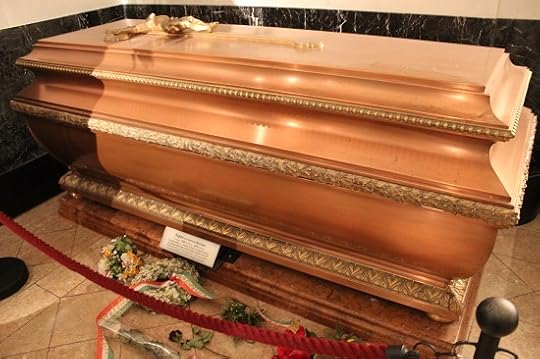 Photo by Moniek Bloks
Photo by Moniek BloksThe post Regina of Saxe-Meiningen – The would-be Empress of Austria appeared first on History of Royal Women.
July 27, 2024
Book News Week 31
Book News Week 31 – 29 July – 4 August 2024

Queen Victoria’s Favourite Granddaughter: Princess Victoria of Hesse and by Rhine, the Most Consequential Royal You Never Knew
Hardcover – 30 July 2024 (UK)

Anne Neville: Queen and Wife of Richard III
Hardcover – 30 July 2024 (UK)
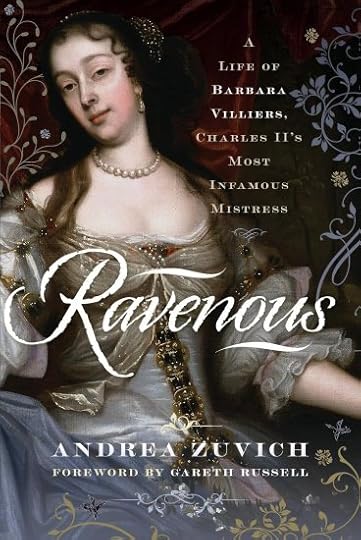
Ravenous: A Life of Barbara Villiers, Charles II’s Most Infamous Mistress
Hardcover – 30 July 2024 (UK)

William and Mary: A History of Their Most Important Places and Events
Hardcover – 30 July 2024 (UK)
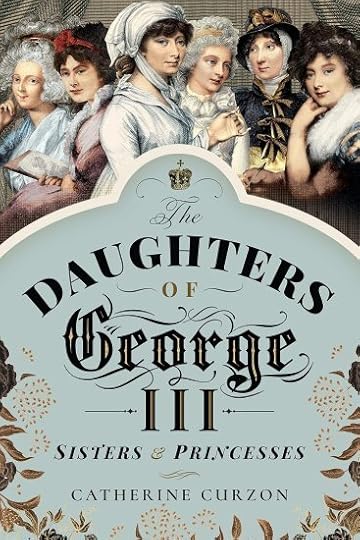
The Daughters of George III: Sisters and Princesses
Paperback – 30 July 2024 (US)

Majapahit: Intrigue, Betrayal and War in Indonesia’s Greatest Empire
Paperback – 1 August 2024 (US)

Minor Majesties: The Paluvettaraiyars and their South Indian Kingdom of Paluvur, 9th-11th centuries A.D
Hardcover – 2 August 2024 (US & UK)
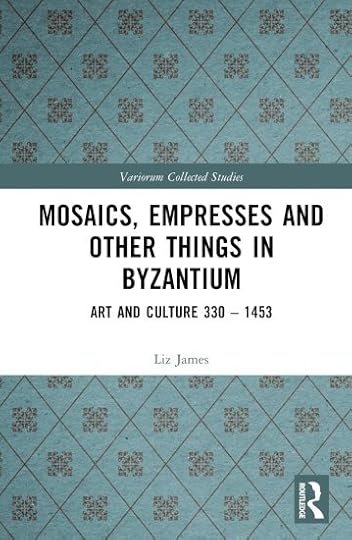
Mosaics, Empresses and Other Things in Byzantium: Art and Culture 330 – 1453
Hardcover – 1 August 2024 (US & UK)

Hair and death in ancient Egypt: The mourning rite in the times of the Pharaohs
Paperback – 31 July 2024 (US)
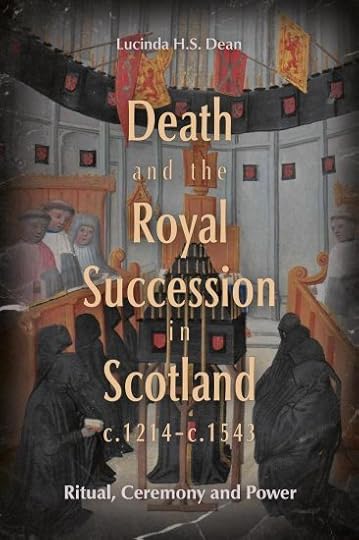
Death and the Royal Succession in Scotland, c.1214-c.1543: Ritual, Ceremony and Power (St Andrews Studies in Scottish History)
Hardcover – 30 July 2024 (UK & US)

Catherine, the Princess of Wales: The Biography
Hardcover – 1 August 2024 (UK)

Henry VIII and the Plantagenet Poles: The Rise and Fall of a Dynasty
Hardcover – 30 July 2024 (UK)
The post Book News Week 31 appeared first on History of Royal Women.
July 26, 2024
Empress Liang Nuying – The ostentatious Empress
Empress Liang Nuying was the first Empress of Emperor Huan of the Eastern Han Dynasty. She was the younger sister of Empress Dowager Liang Na. Therefore, she had a strong family background. Yet, her ruthless actions and her family’s desire for power caused her to lose Emperor Huan’s favour.[1] Even though her family helped her to become Empress, they ended up causing Empress Liang Nuying’s downfall.[2]
In circa 125 C.E., Empress Liang Nuying was born.[3] Her father was Liang Shang, who was the General-in-Chief. She had an older brother named Liang Ji, who would later succeed his father as General-in-Chief. She had an older sister named Empress Liang Na, who was Empress of China to Emperor Shun of the Eastern Han Dynasty. In 146 C.E., Liang Na became Empress Dowager of China. Empress Dowager Liang Na arranged for Liang Nuying to marry the fifteen-year-old Prince Liu Zhi, the Marquis of Liwu.[4] Empress Dowager Liang Na summoned him to the capital to prepare for his marriage.[5] She was also considering him as the next Emperor of China.[6] The current Emperor, Zhi, openly disapproved of Empress Dowager Liang Na’s rule.[7] Empress Dowager Liang Na wanted to see if Prince Liu Zhi would be easier to control.[8] He must have met her expectations because Emperor Zhi suddenly died on 26 July 146 C.E.[9]
On 1 August 146 C.E., Liu Zhi ascended the throne as Emperor Huan of the Eastern Han Dynasty. In the summer of 147 C.E., Emperor Huan married Liang Nuying. The betrothal money was 20,000 pounds of gold.[10] The imperial gifts sent to Liang Nuying’s family consisted of geese, jade, four horses, and many bolts of silk.[11] On 30 September 147 C.E., Liang Nuying was invested as Empress of China. It was said that, unlike Empress Dowager Liang Na, who preferred frugality, Empress Liang Nuying loved extravagance.[12] Her Empress apartments were ornately decorated.[13] She loved to wear fine clothes and expensive jewellery.[14] She also loved painted carriages.[15] Thus, ancient chroniclers have described her to be more ostentatious than any of the previous Empresses of the Han Dynasty.[16]
The early years of Empress Liang Nuying’s marriage were initially happy.[17] She had a strong family background and was charming enough to attract her own husband.[18] She monopolised Emperor Huan’s favour and attention.[19] He did not favour any other women.[20] However, Empress Liang Nuying failed to produce any children.[21]
In early 150 C.E., Empress Dowager Liang Na stepped down as Regent. On 6 April 150 C.E., Empress Dowager Liang Na died. This left Emperor Huan with more power.[22] Emperor Huan’s first action was to bring his mother, Worthy Lady Yan Ming (the posthumous Empress Xiaochong of the Eastern Han Dynasty), to the palace.[23] Emperor Huan gradually lost interest in Empress Liang Nuying.[24] She had failed to give him children, and her charms no longer fascinated him.[25] Instead, he favoured numerous imperial concubines.[26] It was said that Empress Liang Nuying was very jealous, and she resorted to killing the Emperor’s children.[27] Only one child managed to survive during Liang Nuying’s reign as Empress.[28] It was a daughter named Princess Hua.[29]
Empress Liang Nuying’s brother, Liang Ji, eventually held complete power in the government.[30] Emperor Huan became fearful of Liang Ji, which caused him to rarely visit Empress Liang Nuying. On 9 August 159 C.E., Empress Liang Nuying died “of worry and anger”,[31] though historians claim she most likely died of natural causes.[32] On 28 August 159 C.E., she was buried in Yiling with the honours befitting an Empress.[33] She was given the posthumous name of Empress Yixian.[34] Shortly after Empress Liang Nuying died, Liang Ji rebelled against Emperor Huan.[35] He was defeated and killed. Out of anger for Liang Ji’s rebellion, Emperor Huan demoted her from Empress to Worthy Lady on 14 September 159 C.E.[36] Emperor Huan then invested Deng Mengnu as his second Empress that same day.[37]
Empress Liang Nuying was Empress of the Eastern Han Dynasty for twelve years. Yet, history has not been kind to her. She was known to be ostentatious and jealous.[38] Yet, her greatest sin was that she remained barren.[39] She failed to provide Emperor Huan with an heir. It did not help that her family often caused rifts between Emperor Huan and Empress Liang Nuying’s marriage.[40] It was initially happy, but it fell apart mostly due to her family’s thirst for power.[41] If it was not for her brother’s rebellion, Empress Liang Nuying would still have been honoured as Empress after her death.[42]
Sources:
De Crespigny, R. (2015). “Liang Nuying, Empress of Emperor Huan”. Biographical Dictionary of Chinese Women: Antiquity Through Sui, 1600 B.C.E. – 618 C.E. (L. X. H. Lee, Ed.; A. D. Stefanowska, Ed.; S. Wiles, Ed.). NY: Routledge. pp. 160-162.
iMedia. (n.d.). “The three empresses of Emperor Huan of the Han Dynasty: jealousy became mad and the end was bleak”. Retrieved on 20 October 2023 from https://min.news/en/news/578c75bfafea....
iNews. (n.d.). “How can Liang Nuying, who is mediocre and has no talent and virtue, become the queen? How did she end up?”. Retrieved on 20 October 2023 from https://inf.news/en/history/58a5dd8ee....
McMahon, K. (2013). Women Shall Not Rule: Imperial Wives and Concubines in China from Han to Liao. NY: Rowman and Littlefield.
[1] De Crespigny, 2015
[2] De Crespigny, 2015
[3] De Crespigny, 2015
[4] De Crespigny, 2015
[5] De Crespigny, 2015
[6] De Crespigny, 2015
[7] De Crespigny, 2015
[8] De Crespigny, 2015
[9] De Crespigny, 2015
[10] De Crespigny, 2015
[11] De Crespigny, 2015
[12] De Crespigny, 2015
[13] De Crespigny, 2015
[14] De Crespigny, 2015
[15] De Crespigny, 2015
[16] McMahon, 2013
[17] De Crespigny, 2015
[18] De Crespigny, 2015
[19] De Crespigny, 2015
[20] De Crespigny, 2015
[21] De Crespigny, 2015
[22] De Crespigny, 2015
[23] De Crespigny, 2015
[24] De Crespigny, 2015
[25] De Crespigny, 2015
[26] De Crespigny, 2015
[27] iNews, n.d., “How can Liang Nuying, who is mediocre and has no talent and virtue, become the queen? How did she end up?”
[28] De Crespigny, 2015
[29] De Crespigny, 2015
[30] iMedia, n.d., “The three empresses of Emperor Huan of the Han Dynasty: jealousy became mad and the end was bleak”
[31] McMahon, 2013, p. 107
[32] De Crespigny, 2015
[33] iMedia, n.d., “The three empresses of Emperor Huan of the Han Dynasty: jealousy became mad and the end was bleak”
[34] iMedia, n.d., “The three empresses of Emperor Huan of the Han Dynasty: jealousy became mad and the end was bleak”
[35] iMedia, n.d., “The three empresses of Emperor Huan of the Han Dynasty: jealousy became mad and the end was bleak”
[36] De Crespigny, 2015; iMedia, n.d., “The three empresses of Emperor Huan of the Han Dynasty: jealousy became mad and the end was bleak”
[37] iMedia, n.d., “The three empresses of Emperor Huan of the Han Dynasty: jealousy became mad and the end was bleak”
[38] De Crespigny, 2015
[39] De Crespigny, 2015
[40] De Crespigny, 2015
[41] De Crespigny, 2015
[42] De Crespigny, 2015
The post Empress Liang Nuying – The ostentatious Empress appeared first on History of Royal Women.
July 25, 2024
The Burmese Ruby Tiara
The Burmese Ruby Tiara is one of the tiaras that Queen Elizabeth II added to her extensive collection herself.
Embed from Getty ImagesIn the 1970s, she commissioned the tiara from the jeweller Garrard to add one with rubies to her collection. It was created from diamonds taken from the Nizam of Hyderabad Tiara, which had been a wedding gift. The Nizam had told Elizabeth to pick something from Cartier herself. The 96 rubies that were used had been a wedding gift from the people of Burma.
Embed from Getty ImagesThe stones were all set in a rose motif reminiscent of the Tudor rose.
Embed from Getty ImagesKing Charles III inherited the tiara in 2022, and his wife, Queen Camilla, wore it for the first time during the South Korean State banquet in November 2023.
Embed from Getty ImagesThe post The Burmese Ruby Tiara appeared first on History of Royal Women.
July 24, 2024
Empress Dowager Liang Na – The peaceful Regent who brought order throughout her empire
Empress Dowager Liang Na was the Empress of Emperor Shun of the Eastern Han Dynasty. When Emperor Shun died, Liang Na became the Empress Dowager and Regent. Empress Dowager Liang Na’s regency often suffered many difficulties.[1] She was a capable ruler who installed order throughout her empire.[2] Empress Dowager Liang Na has often been praised for her tremendous achievements.[3]
In 116 C.E., Empress Dowager Liang Na was born. Her father was Liang Shang. Her brother was Liang Ji. She had a younger sister named Liang Nuying (who would later be Emperor Huan’s first Empress). She was from the prominent Liang family.[4] She was the great-niece of Worthy Lady Liang, who was the mother of Emperor He and was murdered by Empress Dowager Dou in 83 C.E.[5] Thus, Liang Na had connections to royalty. It was said that Liang Na was very intelligent.[6] She could recite The Analects and had studied the Book of Songs by the time she was nine.[7] She also liked to model herself on women listed in the Biographies of Eminent Women.[8]
In 128 C.E., Liang Na entered Emperor Shun’s harem at the age of thirteen. Emperor Shun was fourteen years old. Liang Na was given the title of Worthy Lady (which was the highest rank below the Empress position). She won Emperor Shun’s favour.[9] In 132 C.E., Emperor Shun decided it was time to appoint an Empress. However, Emperor Shun did not know who to appoint as his Empress.[10] Worthy Lady Liang Na became one of the four candidates for the Empress position.[11] He even contemplated drawing lots to pick his Empress.[12] He eventually settled on Liang Na because of her noble background.[13]
On 2 March 132 C.E., Liang Na was invested as Empress of China. In 135 C.E., Empress Liang Na’s father, Liang Shang, was promoted to General-in-Chief. In 141 C.E., Liang Shang died. His son, Liang Ji, was given the position of General-in-Chief.[14]
Empress Liang Na was said to be a virtuous Empress.[15] She was modest and intelligent.[16] She recognised her faults and tried her best to correct them.[17] She maintained Emperor Shun’s favour, but she failed to produce any children with him.[18] Emperor Shun’s concubine named Beauty Yu bore him his only son named Liu Bing in 143 C.E.[19] In 144 C.E., Emperor Shun fell ill. He died on 20 September 144 C.E.
Emperor Shun’s one-year-old son, Liu Bing, ascended to the throne as Emperor Chong. Liang Na became the Empress Dowager and was made Regent. Emperor Chong’s mother, Beauty Yu, was not made Empress Dowager alongside Empress Dowager Liang Na.[20] Instead, she received the title of “Great Lady.”[21] Empress Dowager Liang Na was the most powerful woman in China. She ruled alongside her brother, Liang Ji.[22]
On 15 February 145 C.E., Emperor Chong died. Empress Dowager Liang Na and her brother, Liang Ji, finally settled on a successor.[23] He would be Prince Liu Zuan, who was the great-great-grandson of Emperor Zhang.[24] He was eight years old, which was an age where he would still need a Regent.[25] Empress Dowager Liang Na could still continue her regency.[26] On 6 March 145 C.E., Prince Liu Zuan ascended the throne as Emperor Zhi.
Emperor Zhi openly disapproved of Empress Dowager Liang Na and Liang Ji.[27] Empress Dowager Liang Na began to look for a Prince who could replace him as the Emperor.[28] She settled on the fifteen-year-old Prince Liu Zhi, the Marquis of Liwu.[29] Empress Dowager Liang Na betrothed her younger sister, Liang Nuying, to Prince Liu Zhi.[30] This shows that Empress Dowager Liang Na planned to eliminate Emperor Zhi.[31] If she did not plan to kill Emperor Zhi, Empress Dowager Liang Na would have married her sister to him instead of Prince Liu Zhi.[32] On 26 July 146 C.E., Emperor Zhi suddenly died.
On 1 August 146 C.E., Liu Zhi ascended the throne as Emperor Huan. In the summer of 147 C.E., Emperor Huan married Liang Nuying and made her his Empress on 30 September 147 C.E.[33] Liang Ji and his wife, Sun Shou, lived a life of luxury and extravagance.[34] Empress Liang Nuying was also very extravagant and loved luxury.[35] However, Empress Dowager Liang Na remained very frugal and tried to lead by good example.[36]
Empress Dowager Liang Na’s regency was often set with difficulties.[37] There were frequent rebellions.[38] During one of those rebellions, Emperor Shun’s tomb was plundered.[39] The country was also in dire straits financially.[40] Empress Dowager Liang Na appointed talented officials and sent troops to quash the rebellions.[41] Eventually, the rebellions ended, and order was finally restored throughout the empire.[42] In early 150 C.E., Empress Dowager Liang Na officially relinquished her regency.[43] On 6 April 150 C.E., Empress Dowager Liang Na died. She was thirty-four years old.[44]
Empress Dowager Liang Na ruled as Regent for eight years. Even though her family was pleasure-loving and often abused their power, Empress Dowager Liang Na was seen as a model Empress.[45] She was very intelligent and ruled capably.[46] She made many accomplishments.[47] She resolved many difficulties during her regime.[48] She also brought peace throughout the empire.[49] While her family has left a negative image in history, Empress Dowager Liang Na continues to be praised for her virtue and wisdom.[50]
Sources:
De Crespigny, R. (2015). “Liang Na, Empress of Emperor Shun” & “Liang Nuying, Empress of Emperor Huan”. Biographical Dictionary of Chinese Women: Antiquity Through Sui, 1600 B.C.E. – 618 C.E. (L. X. H. Lee, Ed.; A. D. Stefanowska, Ed.; S. Wiles, Ed.). NY: Routledge. pp. 157-162.
McMahon, K. (2013). Women Shall Not Rule: Imperial Wives and Concubines in China from Han to Liao. NY: Rowman and Littlefield.
[1] McMahon, 2013
[2] De Crespigny, 2015
[3] McMahon, 2013
[4] McMahon, 2013
[5] McMahon, 2013
[6] De Crespigny, 2015
[7] De Crespigny, 2015
[8] De Crespigny, 2015
[9] De Crespigny, 2015
[10] De Crespigny, 2015
[11] De Crespigny, 2015
[12] De Crespigny, 2015
[13] De Crespigny, 2015
[14] De Crespigny, 2015
[15] De Crespigny, 2015
[16] De Crespigny, 2015
[17] De Crespigny, 2015
[18] De Crespigny, 2015
[19] De Crespigny, 2015
[20] De Crespigny, 2015
[21] De Crespigny, 2015, p. 159
[22] McMahon, 2013
[23] De Crespigny, 2015
[24] McMahon, 2015
[25] De Crespigny, 2015
[26] De Crespigny, 2015
[27] De Crespigny, 2015
[28] De Crespigny, 2015
[29] De Crespigny, 2015
[30] De Crespigny, 2015
[31] De Crespigny, 2015
[32] De Crespigny, 2015
[33] De Crespigny, 2015
[34] De Crespigny, 2015
[35] De Crespigny, 2015
[36] De Crespigny, 2015
[37] McMahon, 2013
[38] De Crespigny, 2015
[39] De Crespigny, 2015
[40] De Crespigny, 2015
[41] De Crespigny, 2015
[42] De Crespigny, 2015
[43] McMahon, 2013
[44] De Crespigny, 2015
[45] De Crespigny, 2015
[46] De Crespigny, 2015
[47] McMahon, 2013
[48] McMahon, 2013
[49] McMahon, 2013
[50] De Crespigny, 2015
The post Empress Dowager Liang Na – The peaceful Regent who brought order throughout her empire appeared first on History of Royal Women.
July 23, 2024
Time in the Tower – Jane Boleyn, Lady Rochford
Jane Boleyn, born Parker, was the wife of George Boleyn, Viscount Rochford, the brother of Queen Anne Boleyn. George and Anne had both been executed in 1536.
Jane was a distant cousin of King Henry VIII of England, being a descendant of Margaret Beauchamp of Bletso, the maternal grandmother of King Henry VII. She grew up at court and was a maid of honour to King Henry VIII’s first wife, Catherine of Aragon. She was at the Field of Cloth of Gold in 1520 and danced with her future sister-in-law in a display in 1522. She married George Boleyn sometime in 1525, although no exact date survives. Their jointure had been signed in October 1524.
As her sister-in-law’s star rose at court, so did her own position. In 1529, her father-in-law was created Earl of Wiltshire with the Viscount Rochford as his subsidiary title. From then on, Jane was known as Viscountess Rochford. But King Henry would have to break with the Church to eventually marry Anne, and this finally happened in 1533. During this time, Jane probably spent a lot of time with her sister-in-law. As Anne prepared for her coronation in the Tower of London in 1533, Jane was with her and probably would not have realised she would one day be back there in more terrifying circumstances. On 1 June 1533, Jane was part of Queen Anne’s coronation and wore a coronet as befitting her status as a Viscountess.
After just three years, the times of glory were over. On 2 May 1536, both George and Anne were arrested and taken to the Tower of London. Several other men were arrested over the next few days as well. All were believed to have committed adultery with Anne. Jane was questioned, but as a noblewoman, she would not face torture. No transcript survives of Jane’s interrogation, and she has been accused of providing information about George’s incest with Anne. However, this cannot be proven. Anne’s guilt, and those of the others, were already set in stone, and it seems unlikely that Jane was the final nail in the coffin. George was executed on 17 May, followed by Anne on 19 May. Jane was now a widow and, with his estates forfeited, a poor one too.
Despite the circumstances, Jane found a place in the new Queen’s household and she was almost certainly by her side when she died following childbirth in October 1537, Not much later, she returned to court as a lady of the privy chamber for King Henry VIII’s next bride – Anne of Cleves. Although there is no record of Jane being present at Anne’s wedding day, she was certainly with her in the following weeks. The marriage quickly turned sour as Henry was disappointed in his wife. Just six months later, the marriage was over, and Jane testified to a conversation she had with Anne that showed how ignorant Anne had been of the martial relations needed to produce a child. This only confirmed that the marriage had not been consummated, and the marriage could be declared null and void.
Her replacement was already lined up, and on 28 July 1540, King Henry VIII married Catherine Howard. Catherine and Jane hit it off, and Catherine quickly came to rely on Jane. She even joined the King and Queen on their summer progress. However, in November 1541, King Henry received a letter about Catherine’s morals, and he ordered a delicate inquiry. The situation soon unravelled; Catherine had not been a virgin on their wedding night; she was damaged goods. Not much later, he abandoned her at Hampton Court Palace. A terrified Catherine could now only wait. Meanwhile, she and Jane shared a secret.
Catherine had grown up in the household of Agnes Howard, Duchess of Norfolk, where she had “romps” with Henry Mannox, a music teacher, and Francis Dereham, a secretary of the Dowager Duchess. Jane probably knew nothing about this, but she did know what had been going on over the last few months. Catherine had been involved with Thomas Culpeper, a courtier, and Jane had been part of it, taking messages back and forth. They were both in mortal danger.
Soon, Catherine and Jane were separated. Catherine was taken to Syon Abbey, while Jane was taken to the Tower of London. In her desperation, Catherine said that the only reason she had even spoken to Thomas Culpepper was because Jane had pushed her to it. Nevertheless, evidence was found that Catherine was a willing participant in the former of a letter. Catherine had written, “It makes my heart die to think I cannot be always in your company. Come when my Lady Rochford is here, for then I shall be best at leisure to be at your commandment.” The more Catherine talked, the more trouble she brought upon them.
Once more, Jane was protected from torture, but she was interrogated and confessed that she had helped Catherine look out for him. She added, “Culpepper hath known the Queen carnally considering all things that this deponent hath heard and seen.”
Thomas Culpepper and Francis Dereham were executed in December 1541. Meanwhile, Catherine remained in limb at Syon, and Jane linged in the Tower. On the third day there, “she went mad.” This did not quite suit King Henry, and he sent his own doctors to treat her. She was allowed out of the Tower of London and placed in the care of Anne, the wife of the admiral lord Russell. She was probably taken there by the river during the night.
Meanwhile, King Henry worked on an Act of Attainder for Catherine and “that bawd, the lady Jane Rochford.” Guilty verdicts followed not much later, and they had to be taken back to the Tower of London. Catherine was brought there on 10 February 1542 by barge. Jane had been brought back the day before, and they were informed they were to die on 13 February.
 Memorial close to the site of the scaffold – Photo by Moniek Bloks
Memorial close to the site of the scaffold – Photo by Moniek BloksCatherine and Jane each spent their last hours in separate chambers in the royal lodgings to the southeast of the White Tower. Catherine was assisted by four ladies, while Jane also had her servants, as was her right as a Viscountess. She removed her black damask nightdress and put on a black velvet gown. She also wore black shoes and black gloves. The scaffold was draped in black and covered with straw to soak up the blood. The block, which Catherine had used practice, now rested there.
As befitting her rank, Catherine would be the first to die. In his role as Constable of the Tower, Sir John Gage came to fetch Catherine with a polite knock on the door. She walked downstairs, through Cole Harbor Gate, around the White Tower, to the scaffold. It was over in minutes.
 Church of St Peter ad Vincula – Photo by Moniek Bloks
Church of St Peter ad Vincula – Photo by Moniek BloksWater was thrown over the scaffold, and it was then covered with fresh straw. Sir John walked back to the royal lodgings, where Jane waited in either the King’s or the Queen’s apartments. She was escorted down the stairs and around the White Tower, and she had seen nothing of Catherine’s death, and her body had already been carried into the Church of St Peter ad Vincula close by.
Jane climbed the scaffold and graciously forgave the executioner. There is no transcript of her final words, though parts of it were left to us. She said, “I have committed many sins against God from my youth upwards and have offended the king’s royal Majesty very dangerously, so my punishment is just and deserved. I am justly condemned by the laws of this realm and by Parliament. All of you who watch me die, should learn from my example and change your own lives. You must gladly obey the king in all things, for he is a just and godly prince. I pray for his preservation and beseech you all to do the same. I now entrust my soul to God and pray for his mercy.”
 Photo by Moniek Bloks
Photo by Moniek BloksHer cloak was removed, and her hair was bound as she knelt for a final prayer. Her eyes were bandaged, and her head was severed. Jane was buried close to Catherine in the Church of St Peter ad Vincula. Closeby were also George and Anne Boleyn.1
The post Time in the Tower – Jane Boleyn, Lady Rochford appeared first on History of Royal Women.
July 22, 2024
Royal Women at the Olympics
Women were first allowed to take part in the 1900 Paris Olympics Games, and since 1991 all new sports wanting to be included must include a women’s event. With the Paris Olympic Games 2024 about to begin, let’s take a look at some royal Olympians.
The Princess Royal
Embed from Getty ImagesThe Princess Royal was the first member of the British Royal Family to participate in the Olympic Games. She participated in the 1976 Olympic Games in Montreal, riding one of her mother’s horses, Goodwill, in Eventing. She was injured with a concussion halfway through but managed to finish the event. The British team eventually pulled out of the competition.
Zara Tindall
Embed from Getty ImagesIt is perhaps no surprise that the daughter of Princess Anne and Captain Mark Phillips also became an Olympian. Although she is technically not a royal, as a member of the British team, she won a silver medal during the 2012 London Olympics. The medal was presented to her by her mother.
Medals: 1
Charlene, Princess of Monaco
Embed from Getty ImagesThe Princess of Monaco represented South Africa during the 2000 Olympic Games in Sydney. She participated with her team in the 4×100 metre medley relay and finished fifth.
Sheikha Maitha bint Mohammed bin Rashid Al Maktoum
Embed from Getty ImagesSheikha Maitha is the daughter of Sheikh Mohammed bin Rashid Al Maktoum. She was the first woman to represent the United Arab Emirates during the Olympics. She participated in taekwondo and was the flagbearer at the 2008 Olympic Games in Beijing.
Princess Haya bint Hussein
Embed from Getty ImagesPrincess Haya of Jordan represented Jordan at the 2000 Summer Olympics in Sydney in showjumping and was also the flagbearer.
Infanta Cristina of Spain
Infanta Cristina competed in sailing in the Tornado event at the 1988 Olympics in Seoul. She was also the flagbearer for Spain. She finished in the 20th place.
Princess Nathalie of Sayn-Wittgenstein-Berleburg
Embed from Getty ImagesThe daughter of Princess Benedikte of Denmark won a bronze medal with the Danish dressage team during the 2008 Olympic Games. She also participated in the 2012 Olympics. However, as a Princess of a defunct principality, she is also technically not a royal.
Medals: 1
Queen Sofía of Spain
The future Queen of Spain was a reserve member, alongside her brother, the future King of Greece, of Greece’s gold medal-winning sailing team during the 1960 Olympics.
The post Royal Women at the Olympics appeared first on History of Royal Women.
July 21, 2024
Isabella of Austria – A Queen with heroic patience (Part two)
Isabella had been informed that Christian had refused to give up his mistress, a Dutch woman named Dyveke, and she had been installed near the royal palace. Admonishments from both her grandfather Maximilian and her aunt Margaret led to nothing. The welcome ceremony was followed by a coronation and an in-person wedding on 12 August 1515. After this, the couple undertook a tour of Denmark so that the people could meet their new Queen. It was a difficult time for Isabella; she was in a new country where she did not speak the language, and her husband favoured another woman. Despite this, Isabella was said to have fallen in love with him when she first saw his portrait. She expressed her disappointment in several letters to her sister, Eleanor. Isabella turned her attention to learning the language and charitable work, which earned her the love of the people.
Things changed when Dyveke died suddenly in June 1517 amidst rumours of a poisoning. Christian singled out Torben Oxe, a courtier, and ordered his execution, which Isabella tried to prevent. In any case, Dyveke’s death eased the tension in their marriage, and it was perhaps no surprise that nine months later, Isabella gave birth to her first child, a son named John. As Christian and Isabella grew closer, she became more involved in politics. Dyveke’s mother, Sigbrit, also became an important advisor to Christian and even became known as Mother Sigbrit.
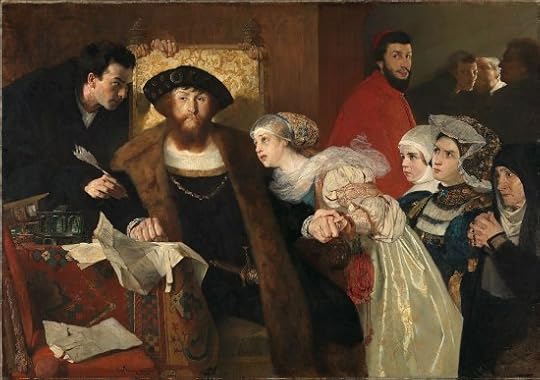 Christian II signing the death warrant of Torben Oxe as Queen Isabella looks on with tears in her eyes (public domain)
Christian II signing the death warrant of Torben Oxe as Queen Isabella looks on with tears in her eyes (public domain)On 4 July 1519, Isabella gave birth to twin boys, who were named Philip and Maximilian. However, both died within a week of their baptism, upon which Sigbrit remarked that it was a good thing as Denmark could not support so many princes.1 With the help of Isabella’s large dowry, Christian became King of Sweden in 1520 but this was to be shortlived. While Christian was in Sweden, Isabella gave birth to a daughter named Dorothea on 10 November 1520. She was named for Christian’s grandmother, Dorothea of Brandenburg.
Following the revolt in Sweden, Christian decided to travel to the Low Countries and placed the regency in Isabella’s hands. He met with Isabella’s aunt and brother in Brussels, as well as Isabella’s step-grandmother, Germaine of Foix. His journey was without success, and the situation continued to spiral out of control. Meanwhile, Isabella had given birth to a second daughter, Christina, sometime at the end of 1522. Her exact birthdate is not known.
Just weeks after Christina’s birth, Isabella wrote to Margaret asking for help with the rebels. She wrote, “We have sad news from my lord in Jutland. The nobles there have rebelled against him and seek to deprive him and our children of their crown and their lives. So we entreat you to come to our help, that we may chastise the rebels.”2
On 20 January 1523, Christian was officially deposed as King of Denmark and Norway and replaced by his uncle, Frederick. Christian decided to flee with his family. Isabella, John, Dorothea and Christina went on board the Lion, even though Frederick begged her to remain in Denmark, assuring them of their safety. Christian still had the popular support, and many watched as the King and his family sailed away on 13 April. Isabella would never see Denmark again.
The family headed for the Low Countries and arrived in Veere on 1 May, where they were received by Adolf of Burgundy, who later escorted them to Mechelen. Isabella’s aunt Margaret took her and the children in but told Christian that it was beyond her power to help. Christian then decided to ask King Henry VIII of England for help, and Margaret lent Isabella several ladies so that she could appear in state in England.
Isabella and Christian reached Greenwich on 19 June, and they were met by Cardinal Wolsey, who introduced them to King Henry and Queen Catherine, who was also Isabella’s aunt. However, Henry told Christian he had made a mistake by abandoning his subjects and advised him to return home. He later wrote to Emperor Charles, “For this perfidy of the King’s subjects is a most fatal example, if for the most trifling cause a Prince is to be called in question, and expelled and put from his crown.”3
Ambassador De Praet wrote of Isabella, “It is indeed grievous to see this poor lady in so melancholy a plight, and I cannot marvel too much at her virtues and heroic patience.”4 Nothing more could be done in England, and so Isabella and Christian returned to the Low Countries in early July. Isabella returned to her children in Mechelen, while Christian went to Antwerp to raise ships with aid for Copenhagen. After a fight with Margaret, he suddenly left for Germany.
Isabella joined him in Germany as he tried to find help, and Isabella even spoke at the Nuremberg Diet. Minister Hannart wrote to Emperor Charles, “Everyone here is full of compassion for the Queen, but no one places the least trust in the King. If it were not for her sake, not a single man would saddle a horse on his behalf.”5 In Nuremberg, she attended the sermons of a Lutheran doctor, much to the annoyance of her brother, Ferdinand.
During a congress in April 1524, a proposal was made that Prince John was to be recognised as Frederick’s successor, but Christian angrily rejected this offer. He soon realised the hopelessness of his cause. Isabella’s health had suffered during these last years and Christian took her to Aachen for the waters. The family then settled at Lierre, halfway between Mechelen and Antwerp, at the end of 1524. While they received an allowance, Isabella was eventually forced to cut up her husband’s old robes to make clothes for the children. When her health required a second visit to Aachen, she declined due to the vast expense.
At the doctor’s suggestion for a change of air, she moved to Swyhnaerde near Ghent, where she soon became so weak that she could no longer leave her room. On 19 January 1526, Isabella received the last sacraments from the priest of Swynaerde, and she commended her children to Margaret’s care. She died a few hours later.
Christian wrote of her wife’s last moments, “As her weakness increased, Frau Margaret sent her servant, Philippe de Souvastre, and other excellent persons, to admonish her after the fashion of the Popish Anti-Christ faith and the religion of his sect. But Almighty God, in his mercy, deprived my wife of her powers of speech so that she made no reply, and they gave up speaking and only anointed her with oil. But before this, she had received the Blessed Sacrament in the most devout manner, with ardent longing, firm faith, and steadfast courage; and when one of her preachers exhorted her, in the words of the Gospel, to stand fast in the faith, she confessed her first trust in God, and paid no heed to the superstitious mutterings of the others. After this, she became speechless, but gave many signs of true faith to the end, and took her last farewell of this world on 19 January. May God Almighty be gracious to her soul, and grant her eternal rest! We are strong in the sure and certain hope that she has entered into eternal bliss, unto which God bring us all!”6
Isabella was still only 24 years old. Her remains were initially interred in the Abbey of St. Peter in Ghent before being moved to Denmark in 1883.7
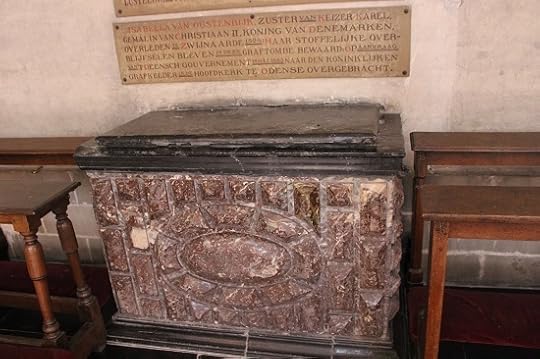 Photo by Moniek Bloks
Photo by Moniek BloksMartin Luther later wrote of her, “Of such King’s daughters there was indeed one, of the noblest birth, Isabella, Queen of Denmark, a Princess of the royal house of Spain. She embraced the Gospel with the greatest ardour and confessed the faith openly. And because of this, she died in want and misery. For had she consented to renounce her faith, she would have received far more help and much greater kindness in this life.”8
The post Isabella of Austria – A Queen with heroic patience (Part two) appeared first on History of Royal Women.
July 20, 2024
Book News Week 30
Book News Week 30 – 22 July – 28 July 2024
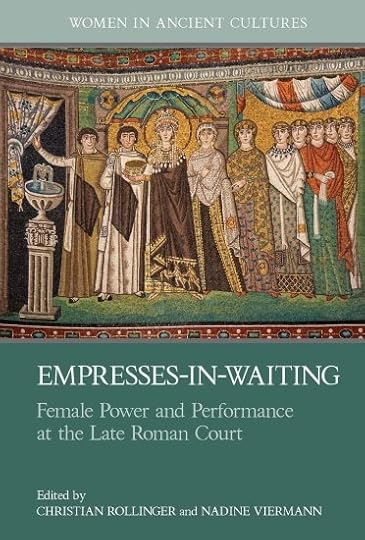
Empresses-in-Waiting: Female Power and Performance at the Late Roman Court (Women in Ancient Cultures)
Hardcover – 28 July 2024 (UK & US)

Plantagenet Princesses: The Daughters of Eleanor of Aquitaine and Henry II
Paperback – 25 July 2024 (US)
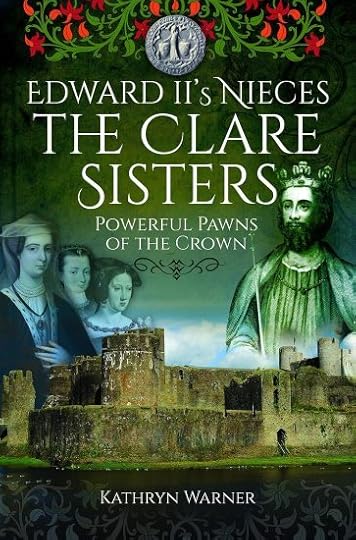
Edward II’s Nieces: The Clare Sisters: Powerful Pawns of the Crown
Paperback – 25 July 2024 (US)
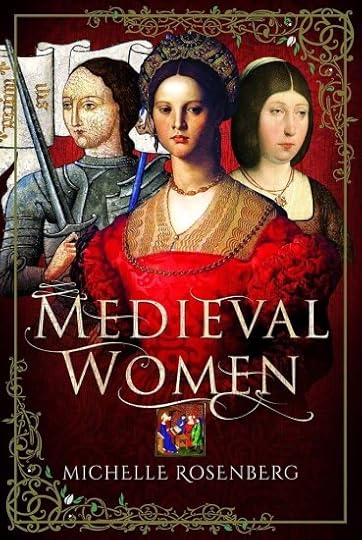
Medieval Women
Hardcover – 25 July 2024 (US)

León and Galicia Under Queen Sancha and King Fernando I (The Middle Ages Series)
Hardcover – 23 July 2024 (US & UK)

Kings and Queens of Scotland (Classic Histories Series)
Paperback – 25 July 2024 (UK)

Agrippina: The Defiant Story of Rome’s First Empress
Paperback – 25 July 2024 (UK)
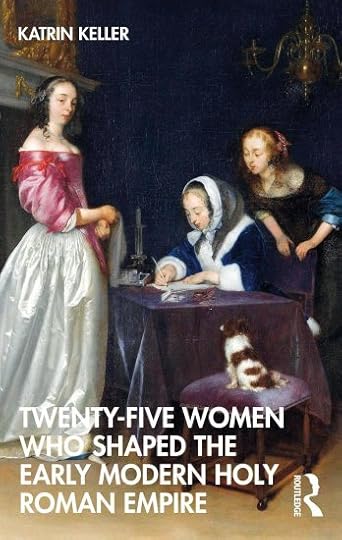
Twenty-Five Women Who Shaped the Early Modern Holy Roman Empire
Hardcover – 25 July 2024 (US & UK)
The post Book News Week 30 appeared first on History of Royal Women.
July 19, 2024
A look at Princess Alexandra of Hanover as she turns 25
On 20 July 1999, Princess Caroline of Monaco gave birth to her fourth child, Alexandra. The father was Ernst August, Prince of Hanover1 whom she married on 23 January 1999.
Embed from Getty ImagesAs Ernst August was a descendant of King George II of Great Britain, he was required to receive permission from Queen Elizabeth II per the Royal Marriages Act 1772. As he held dual British and German citizenship, it was important that the marriage was not void. This act was repealed in 2015 when the Succession to the Crown Act 2013 took effect.
Embed from Getty ImagesAlexandra has three elder half-siblings from her mother’s second marriage to Stefano Casiraghi and two elder half-brothers from her father’s marriage to Chantal Hochuli. Alexandra is recognised as “Princess Alexandra of Hanover” by the Monegasque court out of courtesy.2 Through her father, she is a descendant of Queen Victoria of the United Kingdom, Wilhelm II, German Emperor, and King Christian IX of Denmark, and she is a first cousin once removed of Queen Sofía of Spain. Through her mother, she is a granddaughter of Princess Grace. Her uncle is Albert II, Prince of Monaco.
Alexandra was born in Vöcklabruck, Upper Austria and attended the Lapierre school Le Mée-sur-Seine and the Institut catholique François-d’Assise-Nicolas-Barré in Monaco. From an early age, she was interested in figure skating, and she represented Monaco in figure skating at the 2015 European Youth Olympic Festival. Her parents separated in 2009 but have remained married.
Embed from Getty ImagesIn March 2015, she appeared at the traditional Monaco’s Rose Ball for the first time. In 2018, she was confirmed as a Catholic and this meant she lost her distant place in the British line of succession. She has reportedly been dating Ben Sylvester Strautmann since 2017.
Embed from Getty ImagesWhile she attends many events, she does not have an official role in Monaco. She is currently 13th in the Monegasqu line of succession.
The post A look at Princess Alexandra of Hanover as she turns 25 appeared first on History of Royal Women.



